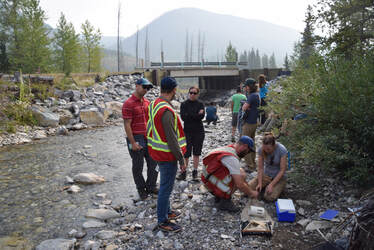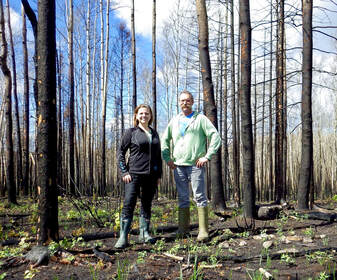 Drinking water is one of society's most critical water needs and delivery of safe drinking water is a national strategic priority. Originally posted to NSERC Strategic Networks Water industry consensus points to the pressing need for new Source Water Protection (SWP) technologies, such as forest management practices, for climate change adaptation to ensure secure community water systems. Most Canadians are just becoming aware how fragile this essential resource is and the potentially catastrophic effects climate change and high energy costs can have on drinking water security. To reduce risks to public health, Health Canada relies on the "multi-barrier approach" to prevent or reduce the contamination of drinking water from source to tap. All variations of this framework identify source water protection (SWP) for risk prevention and in-plant treatment technologies for risk management. Notably, all of the barriers in this framework must be effective to ensure drinking water security. Climate change-associated disturbances (wildfires, hurricanes, floods) have revealed alarming inadequacies in current implementations of the multi-barrier approach. These disturbances are causing increasingly variable or deteriorated source quality, and challenging in-plant treatment technologies beyond design and operational response capacities, to the point of service disruption  Plane flys above Fort McMurray fire photo courtesy Bert Shepherd Plane flys above Fort McMurray fire photo courtesy Bert Shepherd In Canada, effective SWP must focus on forested source watersheds because that is where the drinking water for most urban, rural, and Indigenous communities originates. Healthy forests typically produce high quality water – the value of natural storage and filtration of water by global forests has been estimated at $4.1 trillion. Forest management approaches have been suggested as SWP technologies and include thinning or prescribed burning for preemptive risk reduction or reactive effects mitigation of potentially catastrophic disturbances. While forest management impacts on water have been well studied, little if any of that work has focused specifically on drinking water treatability, which will likely vary regionally. The forWater Network will provide new knowledge regarding the impacts of different forest management strategies on drinking water source quality and treatability to assess their suitability as SWP technologies across the major ecological/forest regions of Canada. Network StructureThe forWater Network connects 23 researchers and 8 universities across Canada to focus on technologies for enabling source water protection and providing opportunities for enhanced training for 110 HQP. In total, 16 Canadian partners, 9 Canadian academic institutions, and 5 international partners have committed their support for the Network. Administration for the forWater Network is located at the University of Waterloo. The Network management structure is designed for effective and efficient management of a complex, transdisciplinary, multi-institutional research network focused on delivering high quality, science outputs and enabling meaningful outcomes for our diverse range of partners. It includes Theme Leaders, a Board of Directors, a Scientific Committee as well as a Knowledge Mobilization Manager. Research ObjectivesA source-to-tap thematic approach to coordinating research projects, participants, and partners is foundational to evaluating source water protection technologies. The forWater Network is organized in four distinct research themes, which that are linked from source-to-tap:
Implementation of new forest management based source water protection technologies may offer an opportunity to mitigate climate change-associated threats to drinking water security.  Thus, the water supply and treatment, industrial forestry, watershed management, public health, and all associated government sectors are necessarily implicated in any solutions that are developed to tackle these challenges. At a highly generalized level, it is expected that:
The forWater Network’s collective science outputs and industry and policy outcomes will help to further establish Canada’s global leadership role in assessing the costs/benefits of investing in green vs. grey infrastructure in ensuring drinking water security. Learn more: http://www.nserc-crsng.gc.ca/Business-Entreprise/How-Comment/Networks-Reseaux/forWater_eng.asp
0 Comments
Leave a Reply. |
forWater NetworkThe Network provides insights into new scientific research for safe, secure drinking water---globally---which starts with resilient forests Archives
October 2023
Categories |




 RSS Feed
RSS Feed

